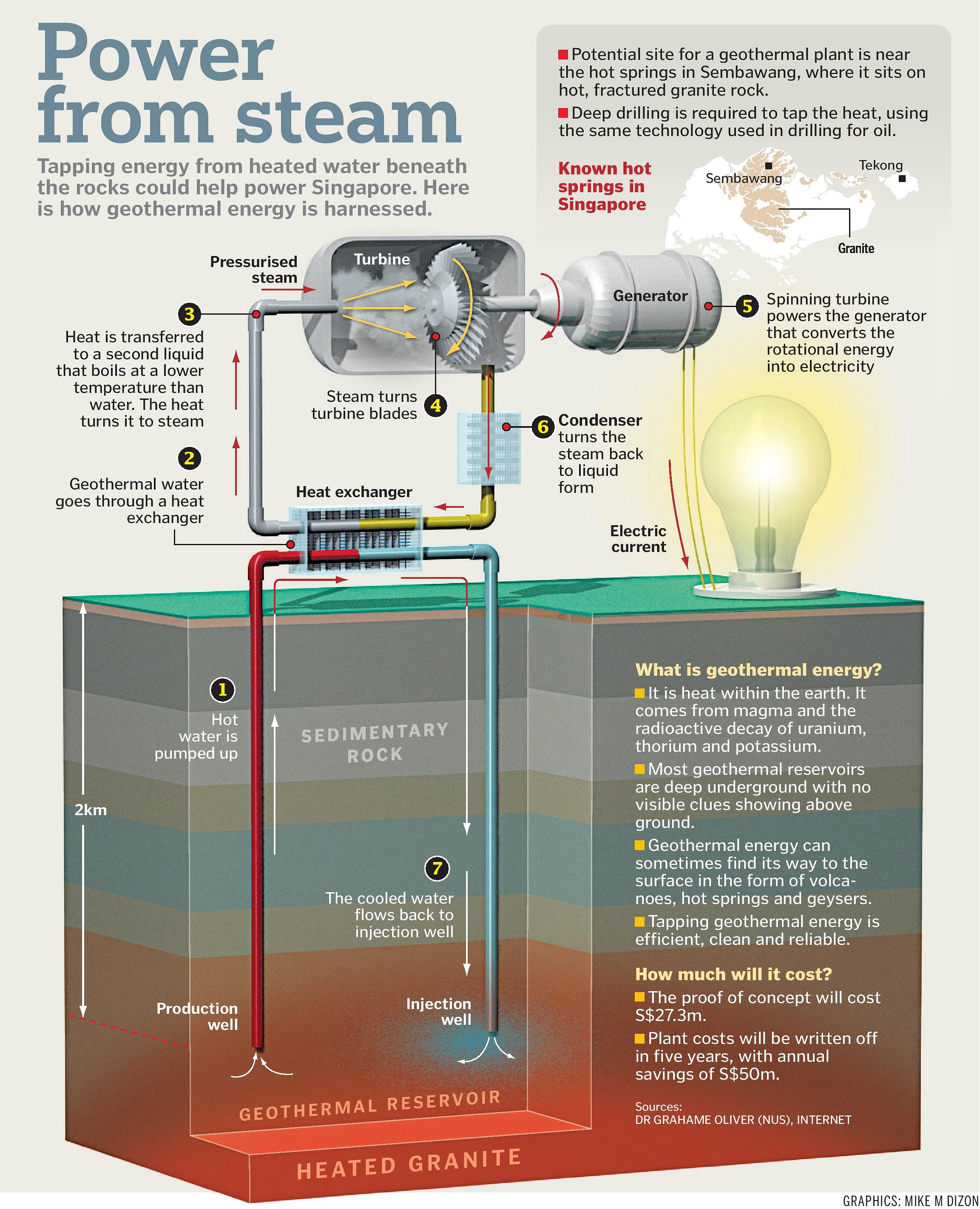A hot spring tucked away in Sembawang might just hold the key to Singapore's untapped geothermal power potential, and at least one geologist is going full steam ahead on the idea.
The spring at Gambas Avenue produces water at 70 deg C and lures visitors keen to test its rumoured curative powers, but it could have a bit more than that to offer.
Dr Grahame Oliver believes the energy that heats the unassuming spring could be tapped - based on his geologic predictions and evidence from Singapore quarries - to power 50,000 homes here.
He told scientists at the annual meeting of the Asia Oceania Geosciences Society yesterday that the concept needed further study, but added: "I see this as a new look at Singapore's geology, with a new geothermal model that explains existing hot spots."
Geothermal energy stems from the earth's heat and is usually tapped at the boundaries of tectonic plates, such as those in Indonesia, where there are natural heat sources near the surface.
Dr Oliver, a visiting don at the National University of Singapore teaching mainly petroleum geosciences, said that while Singapore is not at a plate boundary, sources of geothermal energy can be located by following hot springs.
The Gambas Avenue spring suggests it sits atop a bed of hot rock - in this case, granite. Much of north and central Singapore sits on granite, which generates infinitesimal amounts of its own heat, Dr Oliver said.
This heat accumulates over millions of years and, when combined with the earth's other natural heat, great warmth can be found nearer the surface in granite than in other types of rock.
Dr Oliver's search for the water's source and direction has taken him to quarries in Bukit Timah and Little Guilin in Bukit Gombak.
He found joints and faults in the rock that channelled rainwater to the north-east and south-west and onto the spring at Sembawang.
His theory suggests that a shaft could be drilled about 2km into the earth at the right spot near Sembawang or another hot spring, such as the one at Pulau Tekong, a military training area.
At that depth, the water would be about 150 deg C and emerge as steam, which could drive a turbine to produce electricity. The water would be channelled back into the earth.
Or cooler water - at about 70 deg C - could be pumped up to flash-boil another liquid with a boiling point lower than that of water, producing steam for the turbine.
Since no carbon dioxide is emitted, tapping geothermal energy is cleaner than burning fossil fuels.

Advances in drilling technology mean that shafts could even be bored sideways, deep in the ground, to tap more of the heat.
The technique is already proven: A power plant in Alaska, based on the same principle proposed by Dr Oliver, has a 400kw capacity.
Dr Oliver, who spent three decades teaching at Scotland's St Andrews University and who has studied rock formations around the world, estimates that the cost of surveys and drilling needed to prove the concept would hit $27million.
The capital outlay is high but a 50MW plant the size of three football fields could pay for itself in about five years, power an HDB town and save about half a million barrels of oil a year.
The constant supply would also provide valuable energy security and reduce reliance on fuel imports, Dr Oliver said.
Singapore gets about 80 per cent of its electricity from natural gas, which can be costly as it is linked to the price of oil.
A Trade and Industry Ministry spokesman told The Straits Times: "Policymakers are tracking the dynamic developments in energy technology, including those in geothermal systems.
"The use of geothermal energy will depend on the quality of the physical resource, cost and safety implications and its economic viability."

